This post is also available in: Croatian
Unjustly in a shadow of coastal and island tourist destinations, Dalmatian Zagora has recently been revealing itself as an unexplored terra incognita, a treasure map abounding in X spots – there are so many hidden treasury chests revealing themselves to their visitors.
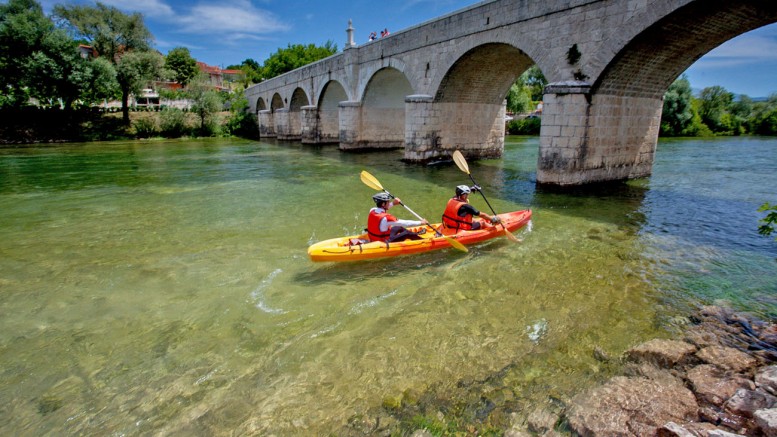
The one thing Zagora doesn’t have – the sea – is replaced by numerous natural and cultural sights, contemporary and historical manifestations, which are unavoidably spiced up with drops of wine ripen under the hot karst sun and the most delicious bites of traditional cuisine, nowhere else in the world to be found – we can assure you!

It wasn’t by chance targeted by the conquerors – every bit of freedom here was paid in blood, and every bite taken from the karst. It is a region where every stone has its story, a region of legends, fairies, uskok and hajduk knights, lively folk tales, but above all, a region where people stingy with words, offer their heart instead.

SINJ
Tucked in a flow of clear and cold the Cetina River, surrounded by peaks of rocky mountain beauties Svilaja, Dinara and Kamešnica, knight’s town Sinj is proud of its jewels: UNESCO protected Alka and church of Our Miraculous Lady of Sinj.

The liveliest period in Sinj is in August, when except the Alka festivities, hordes of pilgrims come to celebrate the day of Our Great Lady, (August 15), searching for comfort and hope in front of painting of Miraculous Lady of Sinj and her gentle look. Concert of Marian spiritual music Klape Gospi Sinjskoj, (August 1), is an exceptional event, while Music Nights on Kamičak Fort, (August 17), authentic star-shaped fortress with a beautiful stage under the clear sky hosts concerts of classical, traditional and jazz world musicians (Ratko Zjača & Nocturnal four).
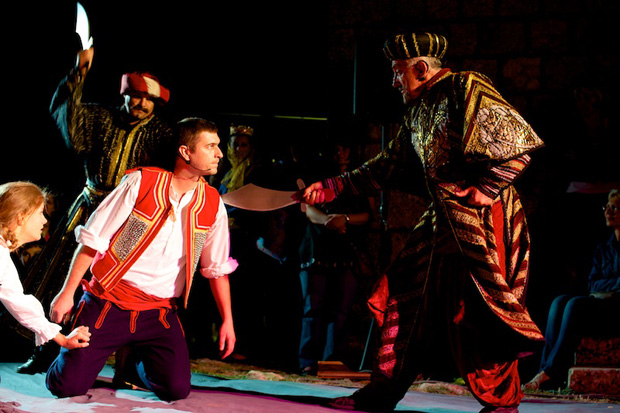
Historical spectacle The Siege of Sinj 1715, August 8, as a time machine takes the audience in the times of famous battle under Sinj. Sinj village fair, (August 2 – 3), traditionally presents and offers various homemade eco-products – from decorations and handy crafts to gourmet delicacies and products of our villages and islands. Visitors can anjoy in grear live music, at S.A.R.S. Music and beer festival, (July 19 – 21), Etno Kamičak festival, (August 23 – 24), hypnotic untouched nature and pleasant company – Gljevstok, (June 22), whichis more than a festival – it is an ode to escape from everyday haste, harmony and peace which can be found only far away from city asphalt – under the starry sky unspoiled by artificial lighting.

. If you want to experience full adventure of Sinj, then go to the Sinj hippodrome and enjoy in Gallop and hurdle race, or visit Aeroclub Sinj Airport (Airshow, Sailing Cup, Parachute Cup) at Piket. Professional instructors will show you their sport activities and show you one different perspective of the city.

TRILJ
Town of bridges over the Cetina, is one most perfectly harmonised combination of active vacation, unique nature and cultural-historic sights and elegant manifestations. Visitors can try rafting, horse-riding, cycling but also get to know cultural heritage of Trilj and the surrounding by visiting forts Nutjak and Čačvina, Grab mills or precious archaeological locality Tilurij. Trilj Cultural Summer (June – September) always offers interesting program, and it’s worth pointing out Thrill Blues Festival, (July 5 – 6) that attracts to Cetina region the greatest names of world blues and is exceptionally visited.
Trilj, „grad mostova“ na Cetini, još je jedna sjajno usklađena kombinacija aktivnog odmora, jedinstvenih prirodnih i kulturno-povijesnih znamenitosti te izvrsno osmišljenih manifestacija. Posjetitelji se mogu okušati u raftingu, jahanju, biciklizmu te upoznati kulturnu baštinu Trilja i okolice posjetom utvrdama Nutjak i Čačvina, grapskim mlinicama ili dragocjenom arheološkom lokalitetu Tilurij. Triljsko kulturno ljeto (Lipanj – Rujan) uvijek nudi zanimljiv program, a valja izdvojiti Thrill Blues Festival (5.- 6. Srpnja) koji u Cetinsku krajinu redovito privlači najveća imena svjetskoga bluesa i iznimno je dobro posjećen.

It’s (not) coming home? Although before the defeat from Croatia in last World Championship, the English claimed that football is coming home, Cetina people wouldn’t agree, and they have solid evidence – tombstone of a 7-year old Roman boy Gaj Liberije, holding a ball ornamented with hexagons is the first symbol of a real lather ball, (proof of this is that the stem was found on Gardun near Trlja, and is located in Vrlička street in Sinj).
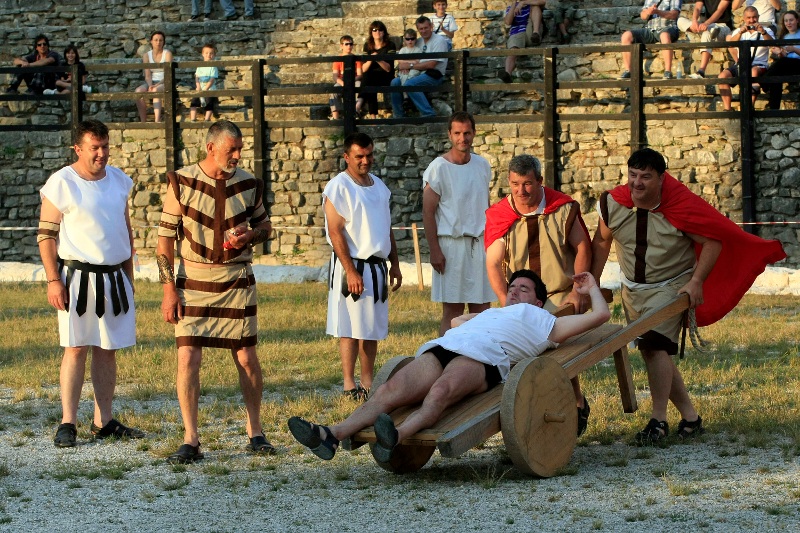
Originally Illyrian, football is a game Delmats used to play long before the arrival of Roman army, but it was the most popular in Trilj’s Gardun, amongst Roman soldiers and noblemen. Today we can enjoy in show football match between Delmats and Romans, very fun comedian theatrical show, which is held in Trilj during summer and in Sinj (July 27).

KLIS
Before it became a site of attractive battles, intrigues, betrayals and revenges of the Game of Thrones, Klis Fort has stood proudly for centuries, blended in a stone cliff like a chameleon. A master-piece of fortification architecture, at the crossroads between the hinterland and the sea, it was a residence of first Croatian rulers, especially in stormy times of Croatian resistance to Ottoman attack.

The memory of those turbulent days is cherished by a Klis Uskok troups. Uskok’s battle for Klis is a traditional medieval festival held every year in summer (July 26 – 28). The main event is spectacular staging of the famous battle from 1532, when many uskoks faced the Ottomans, severely outnumbered. Visitors can see medieval market, try archery and enjoy in sword dance, learn traditional folk songs, taste homemade dishes and drinks and buy authentic souvenirs.

Klis Cultural Summer (June – September) is a main manifestation abounding in theatrical shows, concerts, exhibitions and folk festivities and fishermen nights. Klapa gathering on Klis gathers the best performers of this autochthonous Croatian a capella music performance. On the south slope of Klis make sure to visit parish church of Resurrection of Blessed Virgin Marry, a basilica decorated with frescas of Biblical and historical motifs, one of which tells the story of the fort.
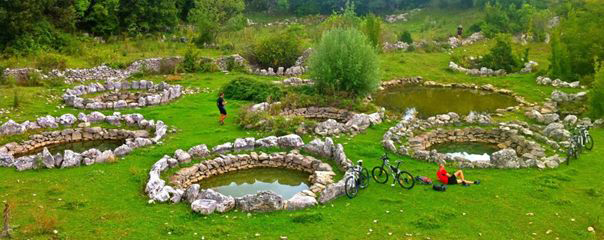
Wells on Rajčica, an intriguing mosaic of 10 perfectly built circles with steps descending down to the water, is one of the most beautiful natural phenomena of Klis hinterland. The wells surrounded by drywalls are protected Croatian intangible heritage and present an unavoidable attraction wrapped in a veil of mystique – legend says that the wells were here even before the Roan came, and that in spite of severe draughts they’ve never run dry.
.
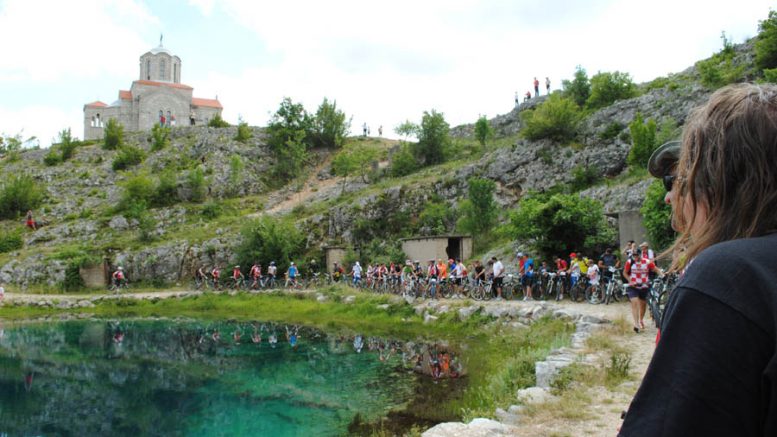
VRLIKA
VRLIKA
Another significant medieval fortification, Prozor Fort, was built at the turn from 14th to 15th century. From the fort spreads an impressive view of Vrlika field, Perućko lake and the very town and its surroundings.
Česma (Vrilo) is a picturesque park from 19th century, a spring of one of many the Cetina tributaries. As an important place for gatherings and socializing, it was an inspiration to Milan Begović and his libretto for the most popular Croatian opera comedy “Ero the Joker”, (August 3) performed every year at this exact authentic location. Final dance of the opera is a Vrlika silent circle dance, UNESCO-protected intangible cultural heritage.
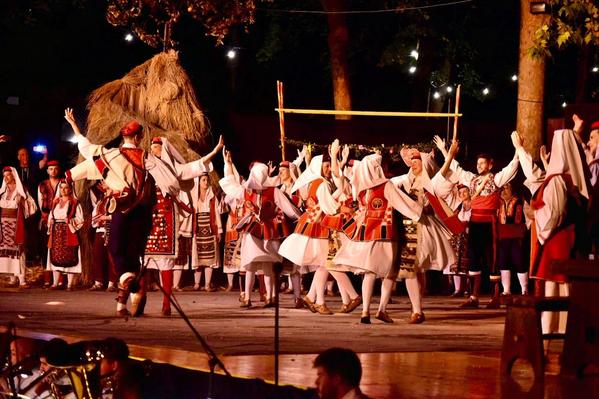
Hundred kilometres of pure beauty of the Cetina river comes from at least 11 tributary springs, but the biggest, the strongest and the most beautiful is Glavaš spring, 130 metres deep. It is watched over by old-Croatian church od St. Spas from 9th century, one of our most precious and most beautiful archaeological sites. Cetina is to be credited for the beauties of Perućko lake, with its breath-taking beauty and vast richness of flora and fauna. It is popular especially with rowers and fishermen and bathers during summer.
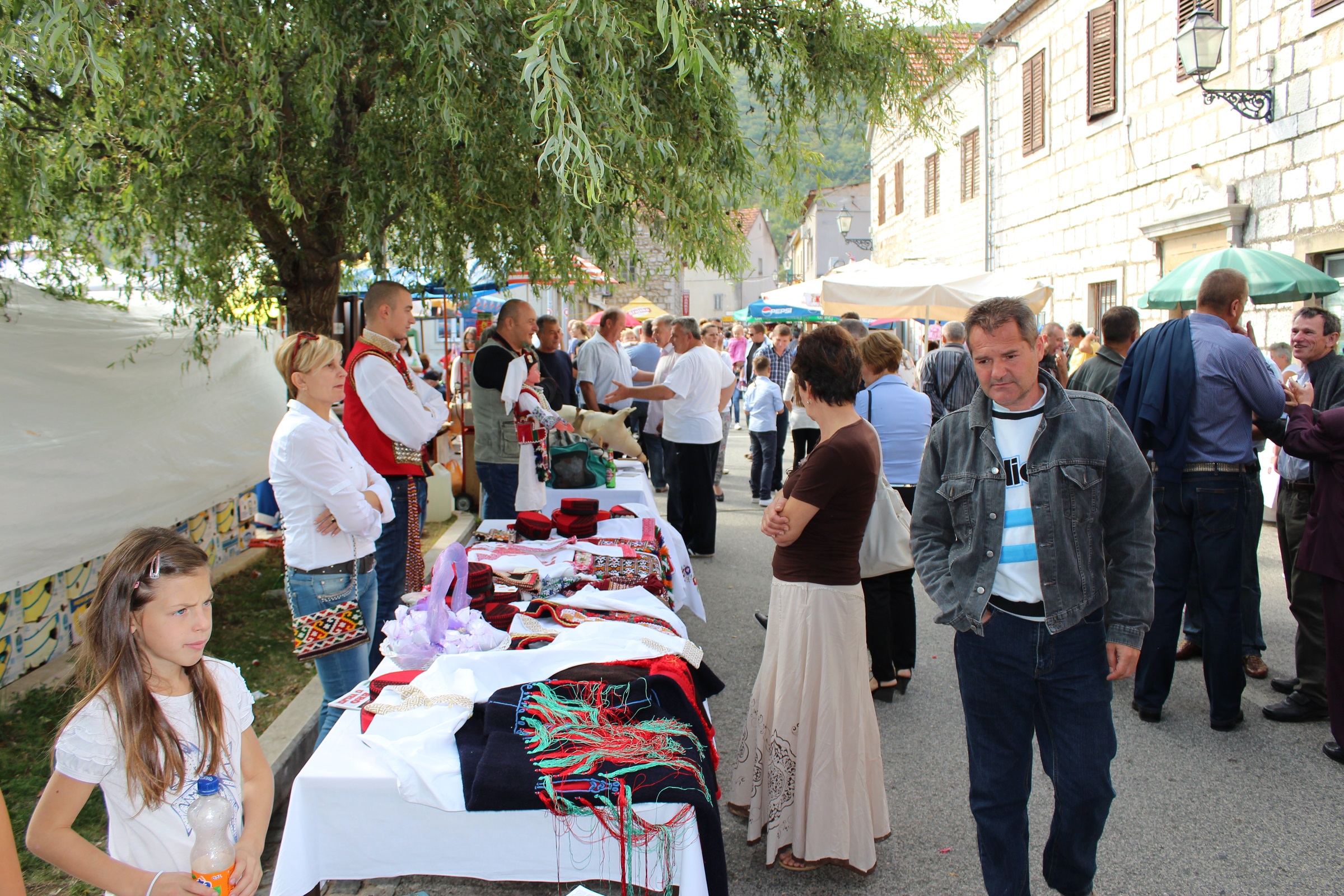
Vrlika people organize several interesting manifestations, and even one world championship – in frying Vrlika’s doughnuts (July 20). Cultural-art association “Milan Begović” organizes very visited traditional Night of song, dance and folk customs (July 27) when cultural heritage of the entire Croatia is presented, and speciall Vrlika silent circle dance and ojkavica ( traditional folk singing).

VRGORAC
Vrgorac – town of poetry, ballads, towers, tombstones, the sweetest strawberries, autochthonous Dalmatian prosciutto and wine, a town of mystic beauty, belvederes, springs, canyons and caves.

In honour of great Croatian poet Tin Ujević, born in Dizdara Fort, since 1995 Vrgorc has cherished literary-cultural manifestation With Tin in Vrgorac. On his birthday anniversary, on 5 July, poetry laureates are awarded with annual literary award of Society of Croatian poets “Tin Ujević”. Tin cultural summer treats visitors with numerous theatrical shows, workshops and concerts.

The locals are proud of their traditional three-day wine-gastro manifestation Days of Dalmatian prosciutto and wine (May 31 – June 2 2019.), which gathers many producers and exhibitors, and visitors can enjoy in top quality Dalmatian prosciutto and other meat delicacies, exceptional wines of autochthonous Vrgorac varieties like zlatarica vrgoska and trnak and many other homemade products.
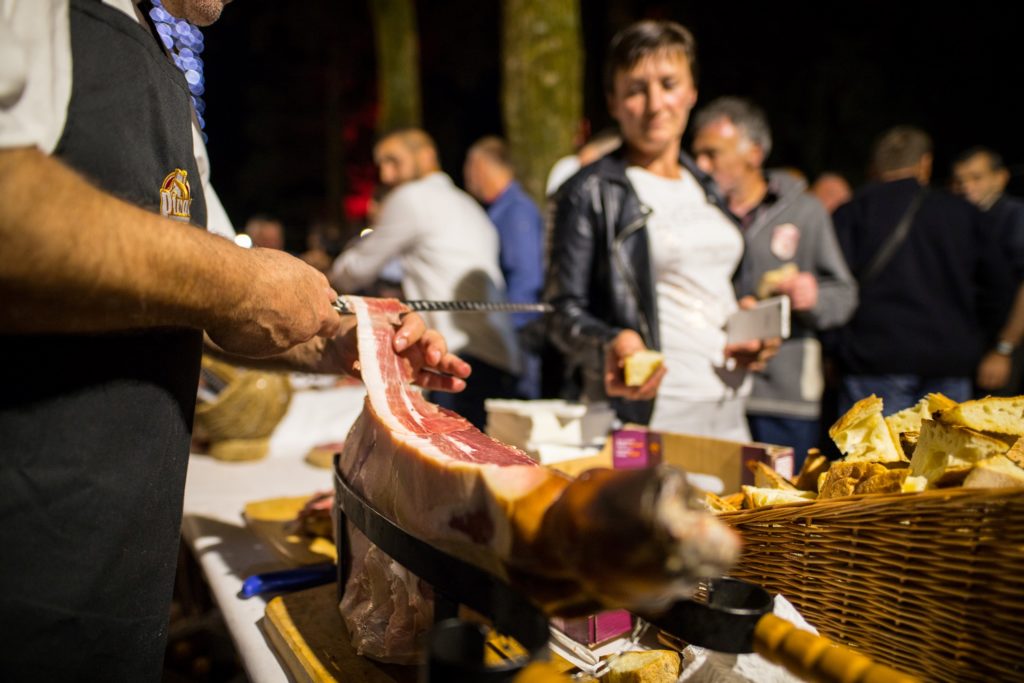
ŠESTANOVAC
Only 15 km from Omiš and the place where Cetina flows into the Adriatic sea, Šestanovac Municipality is an ideal destination for excursionists and those in search of relaxation in untouched nature, small villages and vacation houses.
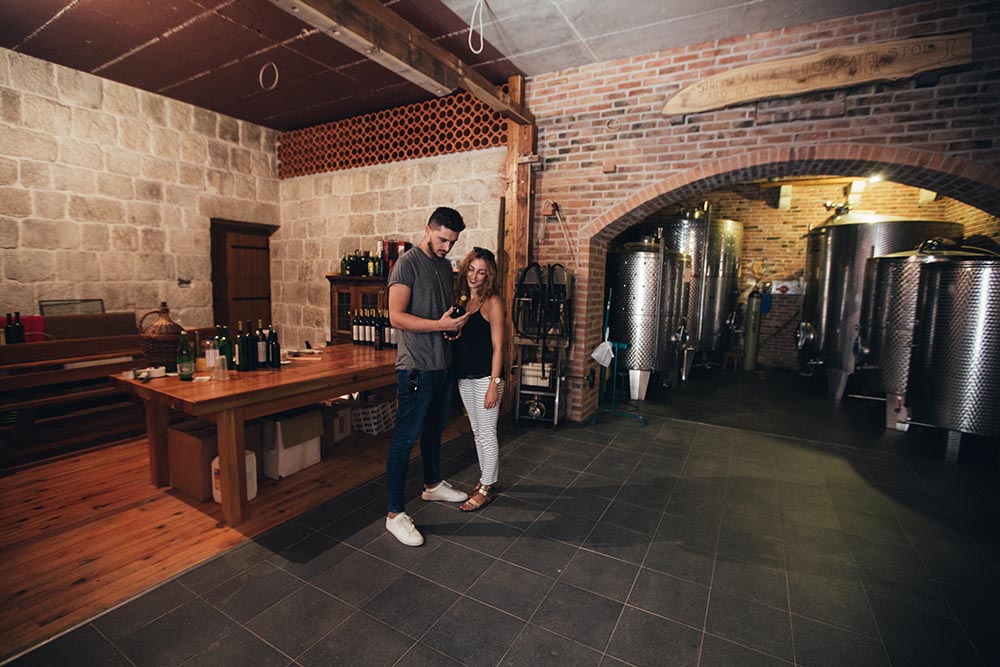
It is exactly the Cetina river, untouchable karst beauty, that offers the most vacation opportunities, Cetina rapids aren’t too demanding, and waterfalls and deep canyon are a stunning stage for rafting and canyoning. Rafting is adjusted to all age groups, while warm Mediterranean climate together with mountain canyon and the river are a guarantee for unforgettable adventures.

If you want to enjoy the river without additional requisites canyoning is ideal activity – jumping in refreshing Cetina, swimming, hiking and floating through the river, rock climbing…

Šestanovac is proud of its ecological olive grove Jurin dvor, which raises plantation of olives since 2006 exclusively on ecological grounds. Winery Biskupović has cherished the tradition of wine-making for thirty year; each of their 3000 vines has fought relentless conditions of scarce ground.
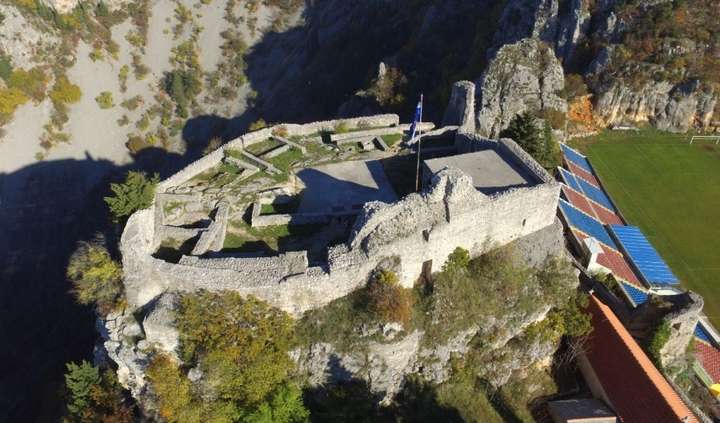
IMOTSKI
Imotski, located on the border of Bosnia and Herzegovina and Dalmatia attracts attention with its most picturesque natural master-pieces, Red and Blue Lake, favourite excursion destination of the locals and tourists.
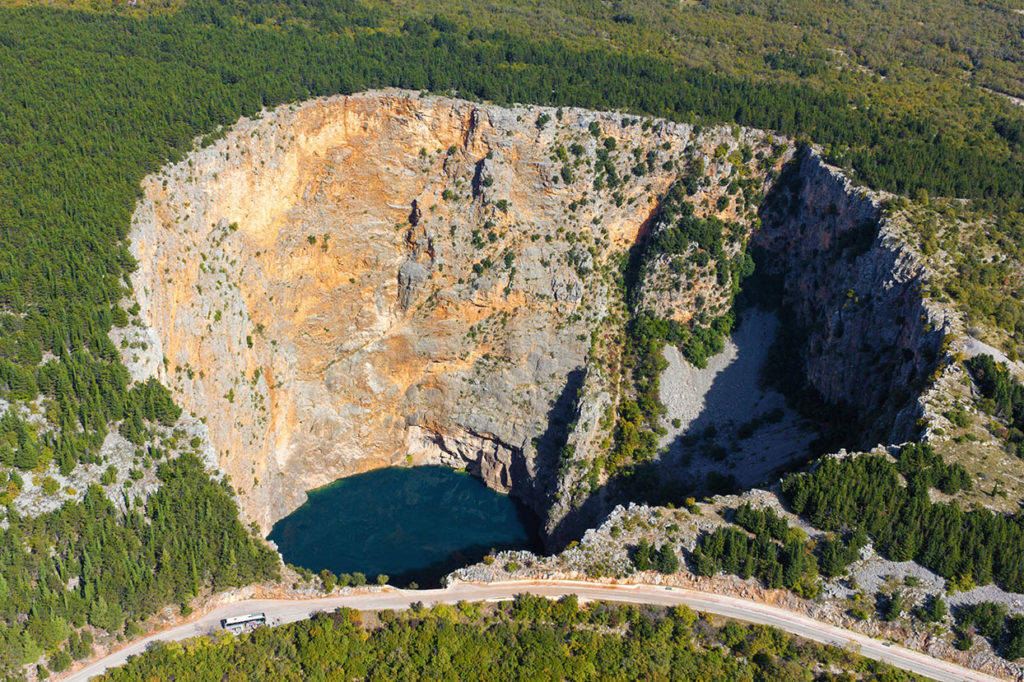
During summer heat Blue Lake turns into a lively refreshing destination, and when it dries up it becomes an attractive and unique football field. Red Lake is unapproachable due to steep cliffs that surround it. Nature has played here and created more lakes of peculiar looks and names: Two eyes, Prosutica lake, Krenica and Provalija, Galipovac, Lokvičićka lakes and Knezovića lake.
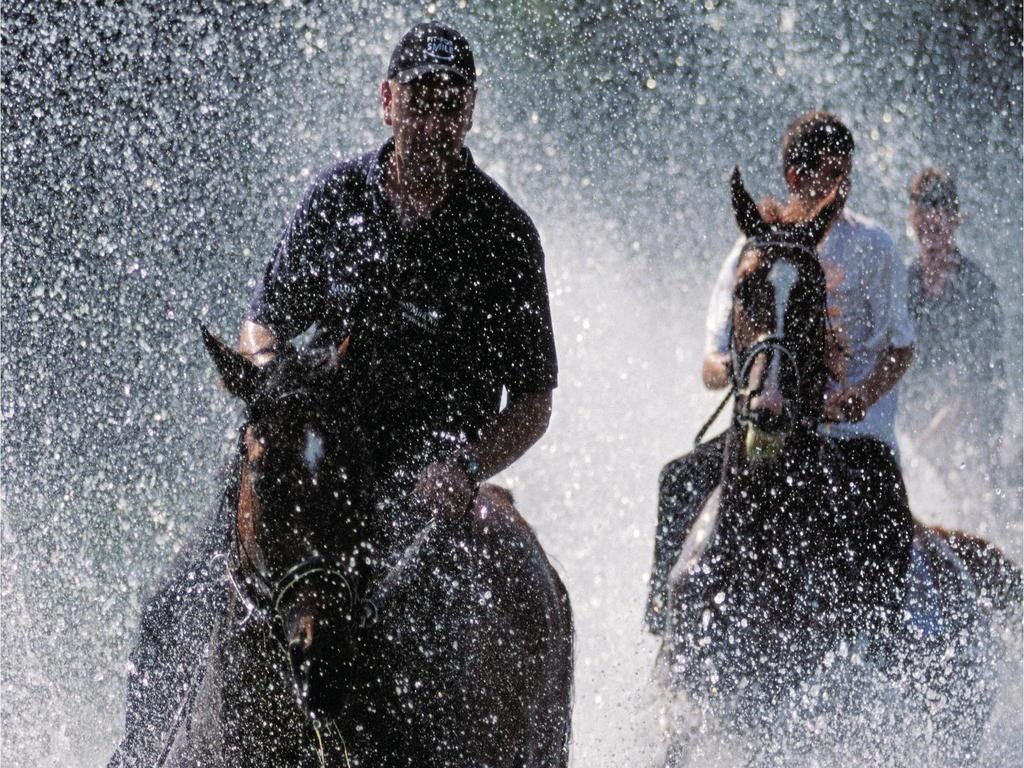
Imotska sila (July 5 – 8) (silo/sijelo – village evening gathering due to some joint work, with entertainment) is a cultural manifestation bringing fun and a spirit of culture into Imotski nights since 1976. This year start with Hasanaaginica performance. Actors in Zagvozd (June 30 – August 10) is a traditional gathering of the best national theatre performances.

As organizers put it – a fairy tale-like journey into a little oasis of theatre, music, dance, art, socializing and friendship. It is especially lively in Imotski on 2 August, during celebration of Our Lady of Angels, patron saint of the town and entire Imotski region. Our Lady of Angels is celebrated in memory of 1717, when outnumbered and poorly armed Imotski people, with the help of Venetians, defeated mighty Ottoman army.
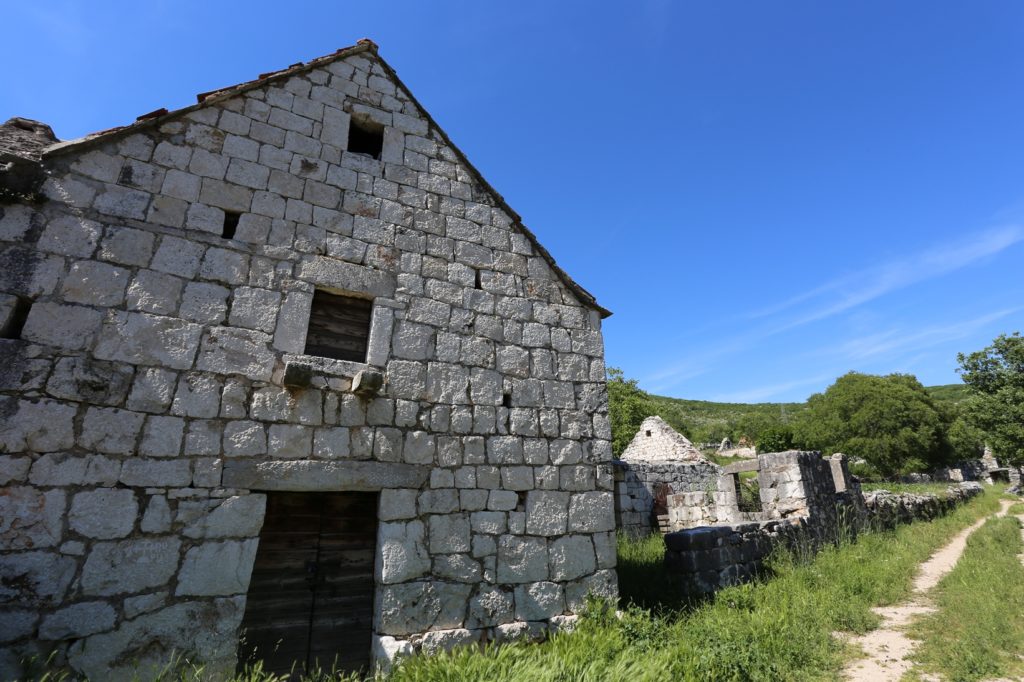
DUGOPOLJE
Dugopolje is situated next to the field of the same name, under north slopes of Mosor mountain, rich with sinkholes and karst pits you can visit by following many mountaineering roads.
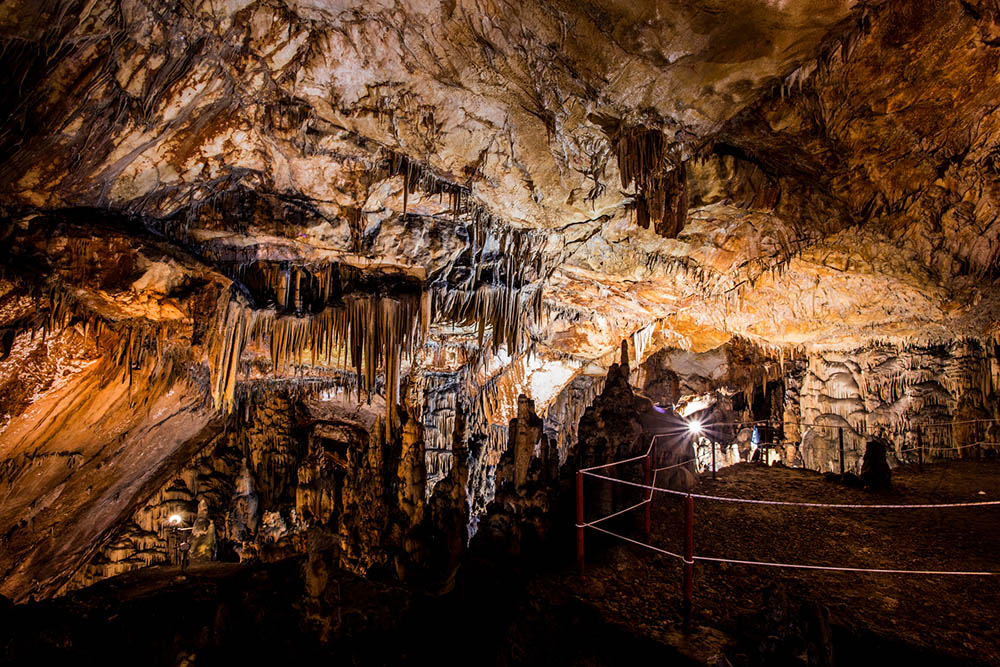
It is most definitely worth visiting Kraljeva peć, unique natural phenomenon and Vranjača cave – a miraculous underground world of stalagmites and stalactites and stone sculptures created by water flow.

You can also take a walk along Roman road, which used to lead from Salona to Aequum settlement (Čitluk near Sinj) and military camp Pons Tiluri (Gardun near Trilj). International folklore gatherings Beauty in the Stone have been held in Dugopolje since 2004. In late September (29.9.) Dugopolje celebrates its patron saints St. Michael and Jeronim. Together with traditional holly masses and processions, numerous sports and cultural events are organized, with unavoidable folk festivities.
More: www.dalmatia.hr
Photo: www.dalmatia.hr, Tourist boards of Sinj, Trilj, Imotski, Klis, Vrlika, Vrgorac, Dugopolje, Šestanovac

This post is also available in: Croatian
